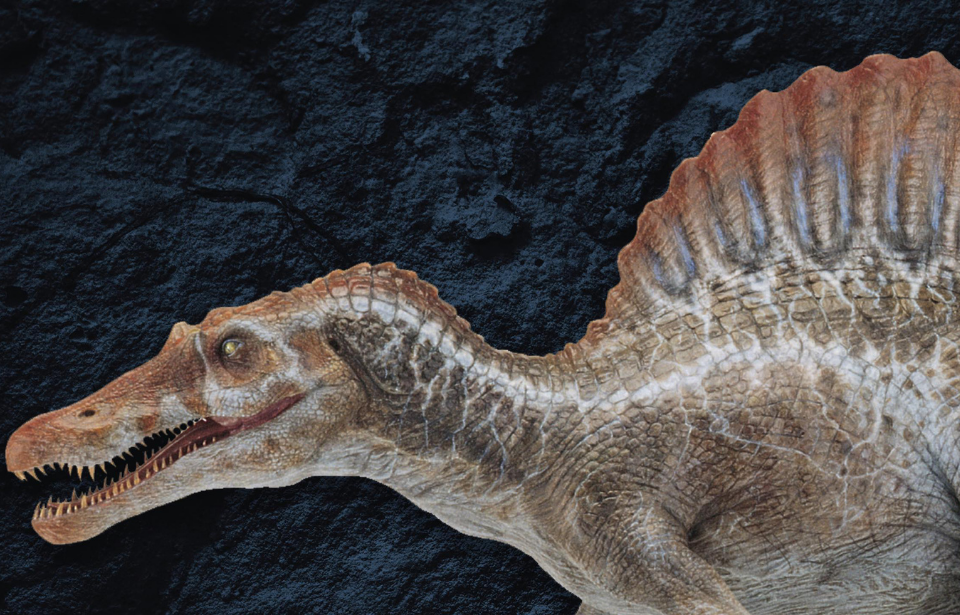Dinosaurs are already scary enough above water. Now imagine a dinosaur bigger than a T-Rex that swims and hunts its prey underwater. Terrifying, right? A new study found that, unlike most dinosaurs, the huge Spinosaurus had dense bones that allowed it to thrive underwater. As threatening as this dinosaur sounds, we must admit it would be the perfect addition to the new Jurassic World movie set for release this summer.

The Spinosaurus was bigger than both the Tyrannosaurus rex and Giganotosaurus. It lived during part of the Cretaceous era, about 95 million years ago.
Not much was known about the Spinosaurus. They have always been studied through incomplete fossils. In 1912, the first Spinosaurus aegyptiacus (meaning Egyptian spine lizard) fossil was found in Egypt. These fossils were moved to a museum in Munich, but were ultimately destroyed during the Second World War. Since then, only fragments of Spinosaurus bones have been uncovered.
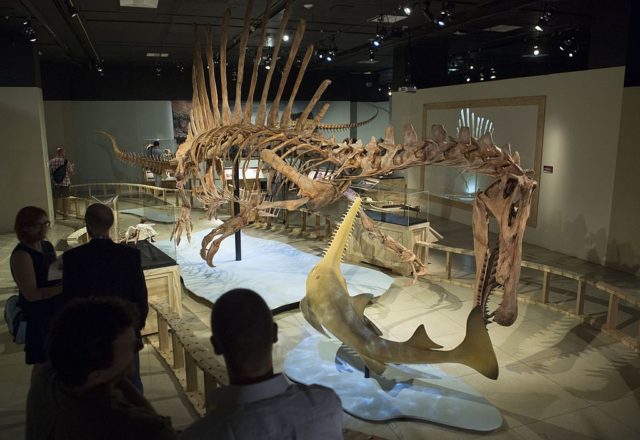
Then, in 2014, archeologists discovered the 95-million-year-old remains of a Spinosaurus in Morocco. This fossil confirmed theories surrounding the Spinosaurus and an aquatic lifestyle. At the time of the discovery, Nizar Ibrahim, a paleontologist from the University of Chicago, said: “It’s a really bizarre dinosaur – there’s no real blueprint for it. It has a long neck, a long trunk, a long tail, a 7 foot (two m) tail on its back and a snout like a crocodile.”
Ibrahim added, “When we look at the body proportions, the animal was clearly not as agile on land as other dinosaurs, so I think it spent a substantial amount of time in the water.”
This hypothesis led researchers to examine the bone density of the fossil to see if the Spinosaurus truly thrived in the water. The study, which published its findings in Nature, concluded that Spinosaurus had dense bones, which suggests they were adapted to life in the water.
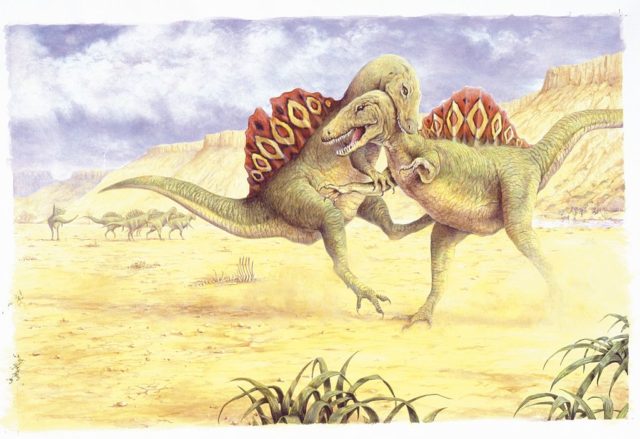
The research team compared femur and rib bone cross-sections from 250 species of extinct and living animals. Some animals examined in the study include seals, whales, elephants, penguins, hippos, alligators, mice, Mosasaurs, and Plesiosaurs. They found that animals who submerge themselves underwater to find food have bones that are almost completely solid, whereas land-dwellers’ bones have more of a hollow center.
Bone density works as buoyancy control, and allows an animal to submerge itself underwater. Lead author Dr. Matteo Fabbri, a postdoctoral researcher at the Field Museum in Chicago, stated, “There is a very strong correlation, and the best explanatory model that we found was in the correlation between bone density and sub-aqueous foraging. This means that all the animals that have the behaviour where they are fully submerged have these dense bones, and that was great news.”
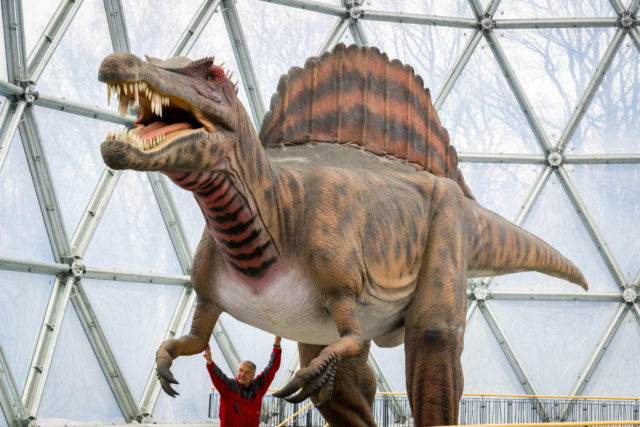
Once establishing this correlation, the research team took cross-sections of bones from the Spinosaurus as well as its close relatives, the Baryonyx and Suchomimus.
Both the Spinosaurus and Baryonyx had very dense bones, which suggests they were comfortable being fully submerged underwater. On the other hand, the Suchomimus has much hollower bones which suggests it lived near the water and ate fish, but would not go swimming like the Spinosaurus.
It was also discovered that the giant long-necked Sauropods also had dense bones, but they also had some hollow bones. In this case, animals that had both dense and hollow bones probably weren’t swimming. “Very heavy animals like elephants and rhinos, and like the sauropod dinosaurs, have very dense limb bones, because there’s so much stress on the limbs,” explains Dr. Fabbri. “That being said, the other bones are pretty lightweight. That’s why it was important for us to look at a variety of bones from each of the animals in the study.”
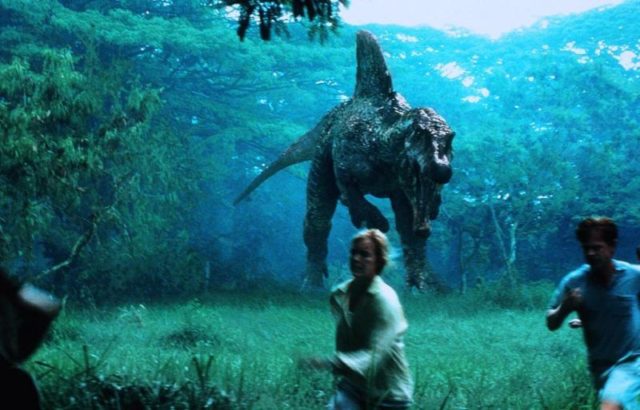
The Spinosaurus found international fame in 2001 when it beat a T-Rex in an epic battle during Jurassic Park III. In reality, this type of battle could have never happened. The T-Rex and Spinosaurus lived and went extinct during separate eras of the Cretaceous period, and lived in completely different geological areas. Nonetheless, anything is possible in the world of Hollywood.
More from us: New Species of Spinosaurid Dinosaur Unearthed in Portugal
We can’t help but wonder if we will see another match-up between a T-rex and Spinosaurus in the upcoming movie, Jurassic World Domination. Knowing that Spinosaurus could swim underwater would theoretically give them a one-up on the land-locked T-Rex!
